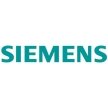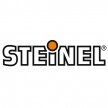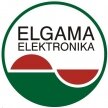Solar power plants are complex energy generation systems that require not only proper design and installation but also continuous maintenance, management, and monitoring. To ensure efficient operation and longevity of solar power plants, various technologies are utilized, such as balancing, automation control, monitoring systems, analysis tools, thermography, and photo analysis.
Balancing in Solar Power Plants
Balancing in solar power plants refers to the management of electricity flow to maintain a stable power supply and maximize efficiency. The balancing system ensures that the energy generated by solar modules is properly distributed among consumers, storage systems (e.g., batteries), and the power grid.
Key Balancing Functions:
Energy Balancing: Balancing systems distribute energy among local consumers, storage systems (batteries), and the power grid, ensuring that energy is used optimally. These systems help prevent electrical losses and waste of excess energy.
Battery Management: When solar energy production exceeds immediate consumption, the balancing system can direct excess energy to batteries. Later, when solar energy production is insufficient (e.g., at night), the battery system can supply energy back to the consumer network.
Peak Load Management: Balancing in solar power plants allows for reducing energy consumption during peak times. This is especially relevant for commercial systems, where it is important to decrease the load on the power grid and energy costs during peak hours.
Automation Control in Solar Power Plants
Automation control ensures that the solar power plant operates optimally without constant human intervention. These systems manage various processes of the solar power plant, such as energy generation, supply, energy storage, and grid interaction.
Automation Control Functions:
Inverter Management: Automated systems control the operation of inverters, ensuring they optimally convert direct current (DC) to alternating current (AC). Automation control also helps manage voltage and current parameters to prevent overloads.
Energy Flow Regulation: The system automatically regulates energy flows between solar modules, batteries, and consumers. If energy demand exceeds solar energy supply, the system can draw energy from batteries or the power grid.
Protection Systems: Automated control systems protect against disturbances in the power grid, such as surges or excessive energy flow. This helps prevent equipment failures and ensures stable operation of the solar power plant.
Analysis and Monitoring Systems in Solar Power Plants
Monitoring systems allow for real-time tracking of the solar power plant's performance, energy production, consumption, and equipment status. This is important for both residential users and large commercial systems to optimize energy production and quickly respond to potential failures.
Monitoring System Functions:
Energy Production Monitoring: Monitoring systems display in real time how much energy is generated by solar modules, what portion is supplied to the grid, and how much energy is consumed on-site.
Failure and Efficiency Analysis: Systems identify potential operational disruptions in the solar power plant, such as shading or module failure, and notify the user. This allows for quick action to ensure the system operates efficiently.
Data Collection and Reporting: Monitoring systems collect data on the solar power plant's performance and provide detailed reports that allow for performance analysis over a specific period. This is important for planning maintenance and system upgrades.
Thermography in Solar Power Plants
Thermography is a technology used to identify thermal issues in solar modules, such as overheating or "hot spots" that can cause efficiency loss or even damage to the module.
Thermography Applications:
Hot Spot Identification: Thermal cameras allow for detecting areas of solar modules that overheat due to damage or defects. This helps in timely problem identification and prevents larger losses.
Module Efficiency Monitoring: Using thermography, operators can check whether solar modules are functioning optimally and if the energy generation process is disrupted due to module or circuit damage.
Maintenance Planning: Regular thermography analysis helps anticipate and plan maintenance work, ensuring that all modules operate efficiently for a long time.
Photo Analysis in Solar Power Plants
Photo analysis is used to visually inspect the components of the solar power plant to ensure their physical integrity and operational efficiency. This can include checking modules for cracks, dirt, shading, or other issues that may affect energy production.
Photo Analysis Applications:
Module Inspection: Using photo analysis, visible defects in solar modules, such as cracks, glass damage, or dirt, can be detected, which may reduce energy production efficiency.
Installation Verification: During photo analysis, it is checked whether the solar modules are properly installed and whether there are any obstructions or shading that may reduce sunlight and consequently energy production.
Preventive Maintenance: Regular photo inspections allow for identifying problems before they cause significant losses. For instance, if dirty or shaded modules are detected, they can be cleaned or obstacles removed to prevent energy production loss.
Practical Use Cases:
Commercial Solar Power Plants: In commercial solar parks, monitoring and automation control systems are used to track energy production in real time and automatically regulate system operations according to power grid needs. Thermography is used to identify hot spots and avoid costly repairs.
Residential Solar Power Plants: Monitoring systems help homeowners track their solar power plant's performance, energy consumption, and grid supply. Photo analysis and regular visual inspections help ensure that modules remain clean and undamaged.
Summary:
Balancing, automation control, monitoring systems, thermography, and photo analysis ensure that solar energy systems operate efficiently, safely, and for a long time. These technologies not only optimize energy production but also quickly identify and resolve issues, ensuring system performance and minimizing maintenance costs.




































